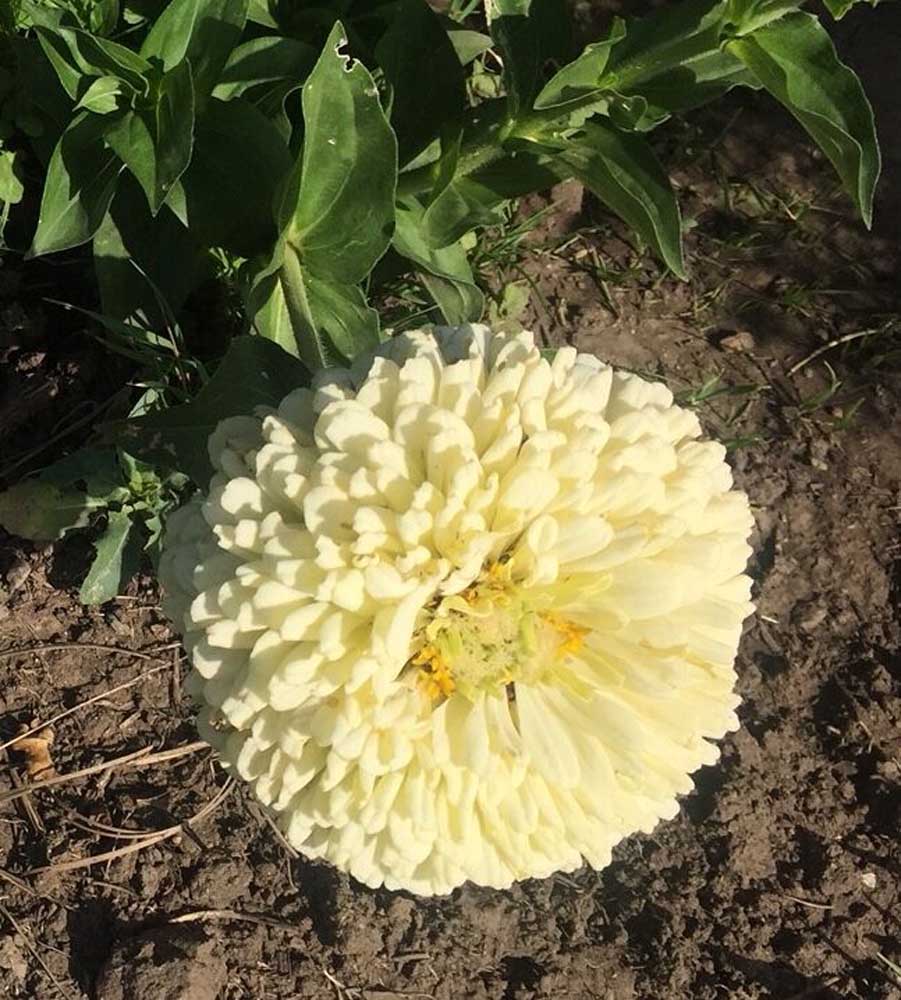GARDEN PLOTS: Companion flowers for a moonlight veggie garden
Published 6:00 am Wednesday, August 23, 2023

- White zinnias are an attractive companion plant for a moonlight vegetable garden. Zinnias are known to serve as an effective trap plant for many insect pests that eat garden vegetables and they deter deer.
“Are we not acceptable, moon? Are we not lovely sitting together here, I in my satin; he in black and white?”
— from Virginia Woolf’s “The Waves,” 1931
In Stephanie Barron’s novel “The White Garden,” she hints at the possibility that Virginia Woolf was murdered instead of drowning herself in the River Ouse, where her body was recovered three weeks after she disappeared. In a bizarre scene set at Sissinghurst Castle in 1941, Woolf and her friend Vita Sackville-West are reading Virginia’s own obituary in the newspaper, which mentions her widely acclaimed book “The Waves.” Part prose, part poetry, the work is still regarded as her most experimental effort as the story of six characters unfolds entirely through their internal monologue.
The above quotation from the book is a fitting introduction to this week’s column about companion flowers for a vegetable garden filled with white veggies that would shimmer on a moonlit night, as Virginia told Vita, “like fairy lamps, lighting your way to bed” (see last week’s column).
Companion planting is an age-old gardening method of planting particular vegetables and flowers together to increase productivity of the edible crops. In addition to attracting pollinators and beneficial insects to the vegetable beds, companion flowers repel some insect pests and attract other pests, luring them away from the plants we want to eat as “trap” plantings.
For a long time, companion planting was regarded as little more than folklore, but scientific studies have shown evidence of its effectiveness. Besides, mixing flowers with vegetables adds beauty and biodiversity to the garden; it’s a lovely departure from monocropping and all the drawbacks that come with that practice.
Here are 10 white, annual flowers that are ideal companions for a moonlight vegetable garden. The benefits of each come from the Old Farmer’s Almanac.
Borage (Borago officinalis) ‘Bianca’ — Companion flower for tomatoes because it attracts pollinating bumblebees and repels hornworms. It also pairs well with strawberries and cucumbers to enhance their growth and flavor.
Calendula (Calendula officinalis) ‘Snow Princess,’ ‘Ivory Princess’ — Companion flower for asparagus, tomatoes, potatoes, winter squash and pumpkins because they help deter beetles and root nematodes; they’re particularly effective against potato beetles.
Cosmos ‘Purity,’ ‘White Knight’ (double flowers) — Companion flower for tomatoes, squash and other blooming plants in the vegetable garden. They attract beneficial insects like ladybugs and repel insect pests such as tomato hornworm. They are also a good trap for aphids.
Flowering onion (Allium amplectens) ‘Graceful Beauty,’ ‘Neapolitanum,’ ‘White Giant’ — Companion flower for beets, lettuce and peppers; their aroma helps to mask the scent of their “plant pals” and disorients insect pests.
Marigold (Tagetes erecta) ‘White Swan,’ ‘White Kilimanjaro’ — Companion flower for onions because the scent of marigolds reduces the egg laying of maggot flies. Marigolds deter beetles from squash and melons, and enhance the growth and flavor of broccoli, cabbage, kale, eggplant and cucumbers.
Nasturtium (Tropaeolum majus) ‘Milkmaid,’ ‘Yeti White’ — Nasturtiums are super-companion flowers because they benefit so many vegetables. They attract caterpillars from broccoli, cabbage and kale, entice beetles and aphids away from beans, radishes, tomatoes and summer/winter squash, and are even said to improve the growth and flavor of cucumbers by deterring several kinds of pests.
Petunia — White hybrids are available in the Madness series, Easy Wave series and Supercascade series. Petunias are companion flowers for asparagus because they are thought to deter asparagus beetles.
Sweet alyssum (Lobularia maritima) ‘Snowcloth,’ ‘Carpet of Snow,’ ‘White Knight’ — Companion flower for peas, broccoli, Brussels sprouts, cabbage, eggplant and lettuce. In fact, this low-growing annual is an effective companion for any plant that is susceptible to aphids because it attracts and supports hoverflies and lacewings, which prey on aphids.
Silver Tansy (Tanacetum niveum) ‘White Bouquet’ — This is another super-companion flower for the vegetable garden because it attracts beneficials like ladybugs and predatory wasps that eat a variety of insect pests. Tansy also repels cutworms that often attack asparagus, bean, cabbage, carrot, celery, corn, lettuce, pea, pepper, potato, and tomato plants. Note that tansy is a perennial and has a reputation for spreading quickly.
Zinnia (Zinnia elegans) ‘Polar Bear,’ ‘Pumila White,’ ‘Profusion White,’ ‘Oklahoma White’ — Companion flower for cauliflower because it acts as a trap plant for insect pests including aphids, beetles, loopers and slugs. They also keep aphids and thrips off melons, and they deter deer.
Besides growing white flowers in the vegetable garden as companion plants, keep in mind that some of the food crops you may be already growing produce pretty white flowers for a moonlight garden. These include cilantro, garlic chives, cayenne pepper, strawberries, anise, ‘Oregon Giant’ snow peas and white rosemary.
As in the White Garden at Sissinghurst Castle, plants with white hairs, which are called trichomes, are often mixed in because they, too, shimmer in the moonlight. Their silvery-gray sheen is a beautiful complement to white flowers and vegetables. A few examples are artichoke (Cynara solymus) ‘Red Star,’ which is a shorter, more compact plant than other varieties of artichoke, Artemisia ‘Silver Brocade,” which is a perennial plant with attractive, deeply divided foliage, and silver sage (Salvia argentea), a biennial/short-lived perennial that has large, fuzzy leaves and white flowers.
Happy moonlight gardening!







